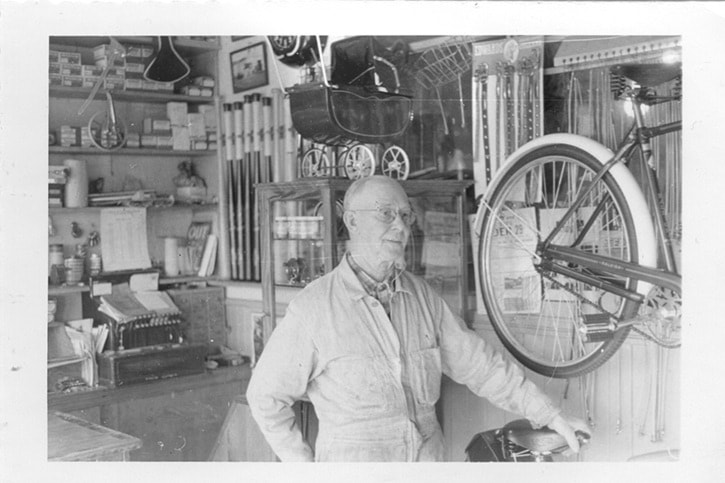In 1932, Marion Angus wrote, “People from all parts of the globe come to White Rock. They come for a week, linger enmeshed by its lotus air for a month, a year; finally decide to spend the rest of their lives here.”
Fortunately, most of them didn’t come just to luxuriate, but donated their considerable attributes to the betterment of their new home.
Certainly, Prairie folk were convinced it was lotus land, and arrived in droves, especially in their retirement years, bringing their expertise and energies with them.
In their battles with the elements they had fine-tuned ingenuity and co-operation to an art form. In other words, action for the common good, as they saw it.
One of the earliest of the Prairie transplants to ‘discover’ White Rock was A.E. Downey, whose family house still stands just off the western boundary of White Rock.
Downey bought his large tract of land shortly after the First World War. He became a leader with Henry Thrift’s Scout Troop, and one of his sons served as volunteer fire chief in White Rock’s early development.
Among the well-known transplants are Bill and Stella Hodgson.
Bill had been so impressed with seeing White Rock during his army service in the Second World War that before the war ended the couple had relocated from Moose Jaw.
They operated a convenience store on east Marine Drive, and were soon involved in community affairs. Bill was to become the first elected mayor of the city. Stella, a longtime hospital auxiliary and museum volunteer, explained the unassuming dedication of her fellow imports this way, “Well, we’re not stuck on ourselves.”
Other Prairie families, the Hanslows, prominent in the business community (‘Grandpa’ Hanslow, operating a bicycle shop in the east end was understandably popular with the younger set); Graydon Connor and his sister, Aileen Postill, devoted to the interests of children; and many others who made White Rock a city of extraordinary gardens.
Thomas Bell and Edith Field brought fame to White Rock with prize-winning exhibits at the PNE. For several years, Bell won first prize for wheat grown on his spare lot on Foster Street. Edith was an expert craftsperson and teacher.
Though technically not from the Prairies, but in that general direction – the City of Nelson – Ann and Patrick Hanley were looking to start a new life in White Rock, where Ann had owned a cottage since 1927. They married in 1945, shortly after Patrick was released from prison having served 20 years for shooting a nurse who refused his romantic advances. During that time, Ann had lobbied incessantly for his release on the grounds of clemency. In White Rock, Patrick went into the insurance business, and Ann continued her third profession, writing.
They landed in time to be caught up in the midst of two of the community’s all-engrossing issues: building a hospital, and incorporation.
Ann soon organized the Women’s Civic League, formed to lobby for the installation of a sewage disposal in White Rock, and incorporation (White Rock was a ward of Surrey at the time).
In 1947, Patrick and a friend each pledged $50 to formally establish the hospital society – both sensible beginnings for the intended projects, and both successful
Former city councillor Vin Coyne remembers Patrick as “a community-minded citizen with great integrity, and always a man of his word.”
He attributed the troubles Pat had with his business partner, Tom Moss, to both men being “strong-minded and obstinate.” When the partnership broke up, postmaster Don Munro later recalled, both partners laid claim to the business postal box. With a thought to his own safety (and Hanley’s past), he said, “You can guess which one I gave it to.”
A community is only what its population makes it, and White Rock is fortunate to have attracted people who have worked ‘for the common good.’
It’s a noble phrase, but the trick is to have the common sense to decide what that common good is. Those Prairie people seemed to have the knack in good measure.
The Peninsula’s best-known mother-and-son historians, Lorraine and Hugh Ellenwood, are dedicated to preserving history through the White Rock Museum & Archives. Call 604-541-2225, or email whiterockarchives@telus.net
